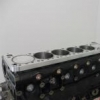Rb34 / 24U (Rb26 + 800Cc) - Project RB high deck engine (and related builds)
Announcements
-
Latest Posts
-
By Murray_Calavera · Posted
You've just discovered a really good reason to tell yourself, yes, I do need to buy an aftermarket ECU. Put the MAF in the bin. Slap in the new ECU and have a think about what turbo sounds you prefer. Do you want a 90's style BOV wooosh? Do you want a hektik tsututututu? Mate, can't go wrong. Just gotta get that ECU and the world is your oyster. -
Hi. Iam just curisou about this topic. I saw this video. It is about Greddy Type FV2. I know that BoVs are about that sound but how and when to use it? I read some topic here and from what i have understand on stock RB with MAF there will be some "problems" if you use this BoV? It vents the air in to the atmosphere and the MAF on stock car needs this air back in to the intake and not out? Or is it wrong? If so...i saw you can put some adaptor to circule air back...but does that not "loose" that sound? I saw another BoV from Turbosmart and it has two "exhaust" like ports? One is for the stock tubing for letting air back and one is for "sound" and let the air in the atmosphere? Can someone please explain? This is the Greddy one: And this is the Turbosmart. THANK YOU!! EDIT: So i read about this topic some more and i if i understand that correctly: That Greddy can function either like BoV or 100% Bypass valve? And that Turbosmart is what they called hybrid so you can adjust what and how many air can be vented out or back in? Is this right? THX!
-
By Dose Pipe Sutututu · Posted
That dirty voltage drop is the culprit I suspect -
i cant get them all in 1 screenshot unfortunately as i just dont know how to move things around tbh, but they are all from the same log and the line crosses at the same point for all of them
-
It's about time I start work on my sun tan. So I knocked up a few parts that will all combine together to become my new power steering reservoir. Now just to produce an abundance of UV and IR rays while melting a heap of bits of alu to become one... Well, that's after I put one more hole in it for the return line to plumb to. It likely won't be this weekend, as Sunday I'm meant to be in doing some last minute stuff to the AMG race car, and the weekend after will be filled with non my Skyline stuff, followed by Bathurst 6 hour. So I don't expect to get to melt metal for at least 3 weeks. I also managed to stuff up and start cutting the hole for the res to pump pipe on the wrong side of the line... It means instead of the lines being nice and tight against the inner guard, they'll be out off the guard. The size of it means I should end up with about 1.8L of power steering fluid, and still have space for another half a litre before it reaches the overflow/breather. This is wayyyyyyy more capacity than factory, which should help keep Powersteer oil temps lower, and the design hopefully allows it to prevent any aerated oil being able to makes its way down to the bottom as it'll have a couple of baffles and some hopeful trickery to force air bubbles away from the bottom.
-





Recommended Posts
Create an account or sign in to comment
You need to be a member in order to leave a comment
Create an account
Sign up for a new account in our community. It's easy!
Register a new accountSign in
Already have an account? Sign in here.
Sign In Now